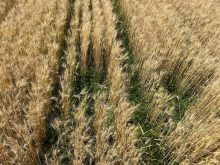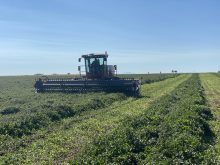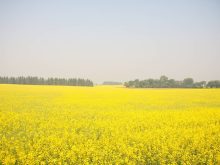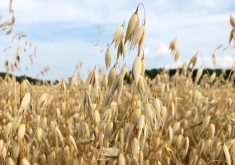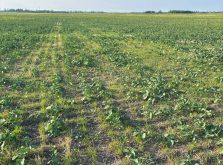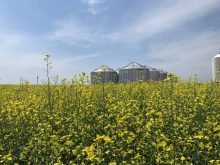Ask any farmer on the Canadian Prairies which disease poses the greatest risk to their canola crops and you will likely get a list of the usual suspects that includes blackleg, sclerotinia, clubroot or verticillium stripe.
One disease not likely to make that list is powdery mildew. Powdery mildew is a fungal disease that penetrates the leaves or stem of a plant and then sucks the nutrients from the plant to produce spores.
Most crops are potentially susceptible to the disease. It first appears as white spots on a plant’s leaves or stem and can cause affected areas to wither and die.
Powdery mildew doesn’t normally have a severe effect on yield since it doesn’t usually develop until late in the season. However, it can be a severe nuisance during harvest when it produces a sticky, silvery paste that coats equipment surfaces, greatly reduces visibility for machine operators and can even pose a fire hazard in some machines.
While the number of severe cases of the disease is generally low in any given season, this year was something of an exception on the Prairies, says Clint Jurke, agronomy director for the Canola Council of Canada.

Longer incubation
Jurke says one factor may have been the stems of many plants stayed green longer because there wasn’t an early September frost as is usually the case on the Prairies. That meant the disease had a longer period to incubate, which was especially problematic for farmers who were straight cutting.
Another factor, according to Jurke, could have been that some areas of the Prairies received rain during harvest. That meant a wetter canopy and created favourable conditions for the fungus to start growing underneath pods.
Powdery mildew doesn’t generally diminish yield in most crops since it doesn’t occur until late in the season when plants begin shutting down. However, some crops such as cereals and pulses are particularly susceptible to the disease because they can become infected earlier in the season when plants are trying to photosynthesize and devote most of their energy to producing yield.

Philip Petays experienced first-hand the effect powdery mildew can have on a crop at harvest this year. He helps farm about 8,000 acres of canola and wheat on a grain farm just outside of Rocanville, Sask., and says he can’t recall a time when the disease was as problematic as it was this year.
“We were straight cutting (canola) and you could not see the end of your header because of the mildew buildup on the cab window,” he says. “You could hardly do a round and it would be coated. It’s not pleasant stuff.
“It took I don’t know how many days to wash this stuff off because it would build up so badly on the header. It was over a quarter-inch thick on the flex headers. It was just thick on there.”

The problem was so bad at times that combine sensors became coated with the paste-like material and became inoperable, forcing operators to switch from automatic to manual mode, says Petays.
“You just had to forget about the automatic mode,” he adds.
Fire risk
Petays notes the spores the disease produces are not only an inconvenience, but also pose a fire risk.
“It will build up on the engine manifold and the manifold is extremely hot. Then it will fall off onto your drive shaft in the engine bay. Our neighbour had to put a fire out twice on his combine,” he says.
Petays isn’t sure why powdery mildew was as much of a problem in his area as it was this year. The good news, he says, is that it didn’t seem to have much of an effect on yields. Still, he cautions growers not to take the threat the disease poses lightly.
“I would call this kind of a wake-up call,” he says.

Help available
The good news when it comes to dealing with powdery mildew is there are several fungicides available to help control the disease in most crops. Canola is one of the exceptions. There are currently no registered fungicides for controlling powdery mildew in canola.
There are other measures producers can take to help manage the disease in their fields, Jurke says. Unfortunately, most of them cost more than the benefits they provide.
For example, farmers have the option of swathing early before the disease has become well established in a crop. The downside is that early swathing could end up costing a producer yield.
“Do you want to lose thousands of dollars in every field just to try escaping something that’s kind of a nuisance is the question,” Jurke says.
Read Also
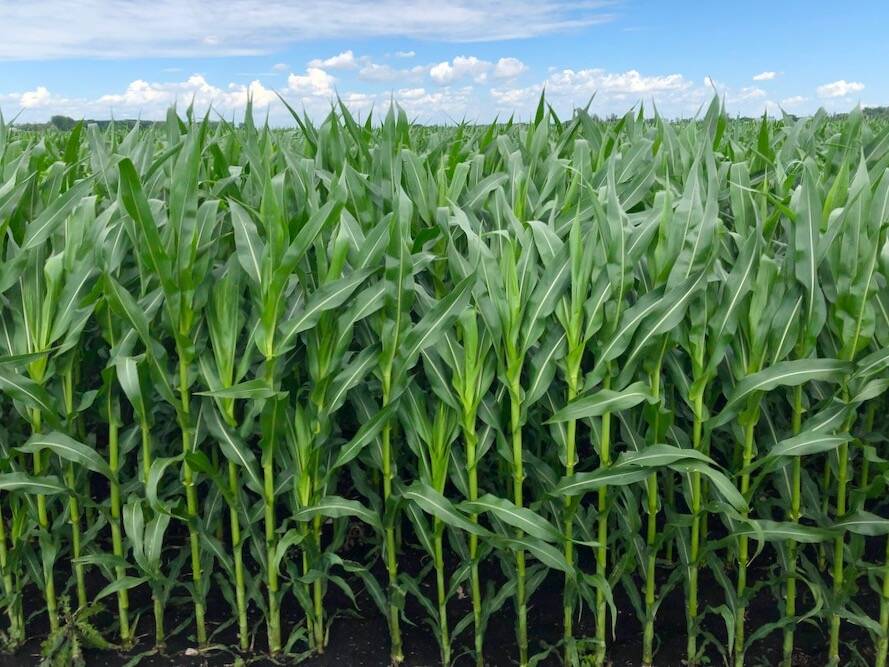
Cancer agency reclassifies another herbicide ‘probably carcinogenic’
The WHO’s cancer research agency has now put atrazine, a herbicide well known to corn growers, in the same potential-hazard category where the agency put glyphosate.
Producers can also try reducing the fertility in a crop stand, which will likely reduce the chance of powdery mildew infecting the crop. It will also likely reduce yield.
“If you’ve got a really good yielding crop and there happens to be some moisture at the end of the season, then maybe you might see some powdery mildew show up. But that’s probably an indication that you have a good crop,” Jurke says.
Jurke’s advice to growers who may have to deal with powdery mildew is to pay close attention to the equipment they are working with.
“Make sure that you are paying attention to your equipment and particularly the cooling system. If spore buildup becomes severe on the radiator, it can cause the engine to overheat and that could shut you down for a while.”




